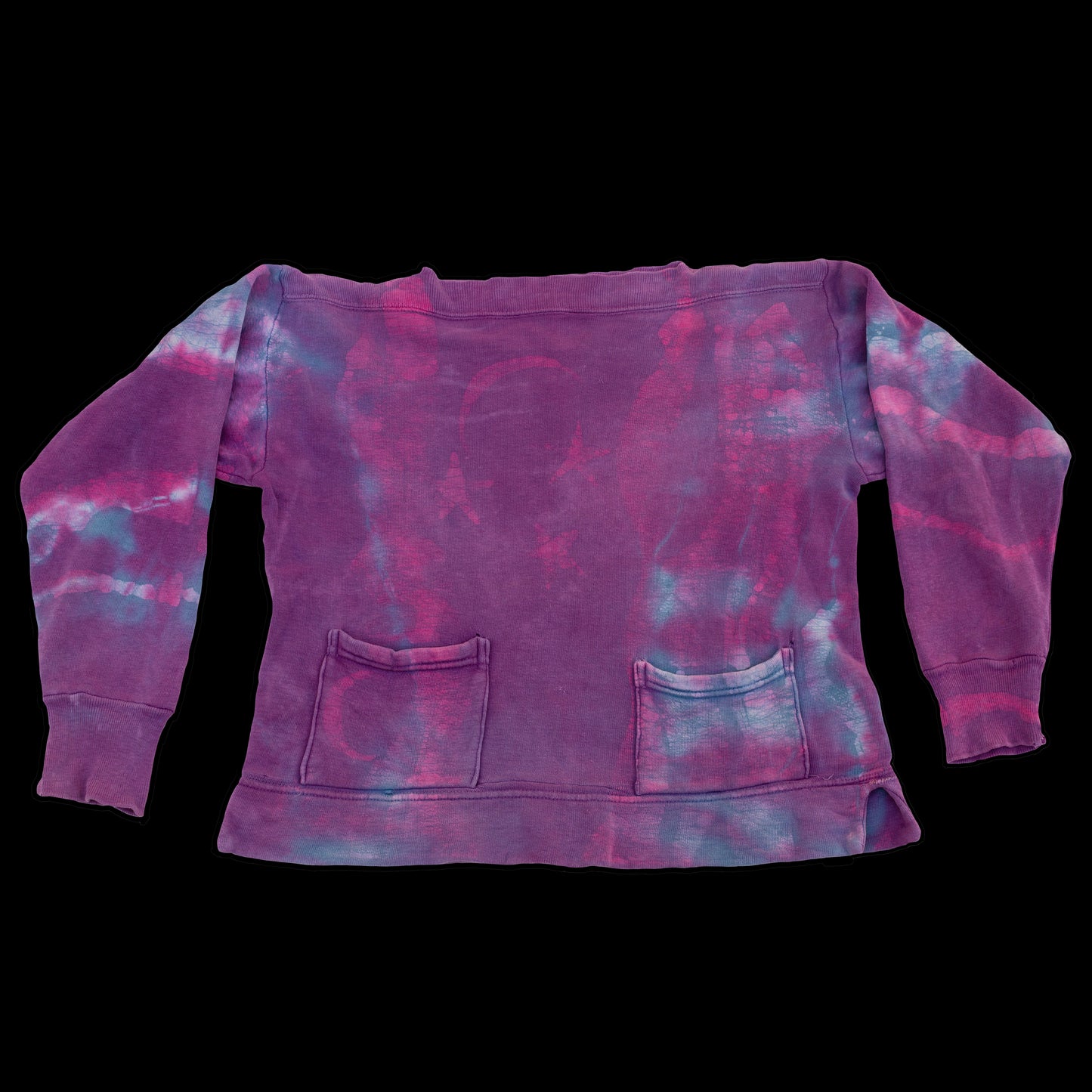1940s Purple Sweatshirt Batik Hippie Tie Dyed 1960s
1940s Purple Sweatshirt Batik Hippie Tie Dyed 1960s
Couldn't load pickup availability
With it's earliest roots in ancient West & Eastern Asian, Latin American, and African origins, tie-dying as a technique was likely first introduced to the America in 1909 by Adelia B. Beard and Charles Pellow - both of whom published articles on the art of "tied-dying" as it was called at the time. The techniques organic nature aligned with the growing push by the Arts and Crafts movement against mass-manufactured products. As The Great Depression rolled around many Americans used tied-dye instructional pamphlets, which were dispensed by the US government, demonstrating how to cheaply rework textiles using blackberries, onionskins, marigolds, and red cabbage. During the 1960s, Rit began advertising its dyes by selling door to door in artists communities like Greenwich Village. Tie-dying, still offering a cheap and accessible way to customize your clothing, had found a new generation and was widely accepted by the counter-cultural movement. In 1969, Rit employed artists to make several hundred tie-dye shirts to be sold at Woodstock. With artists like Janis Joplin, Joe Crocker, John Sebastian (who was a prolific dyer himself) all donning dyed duds on the stage, tie-dye had reached the masses in a big way, and would continue as a trend into the 1970s.
This is a 1940s double pocket sweatshirt that was reworked in the 1960s by dying it with the Batik wax resist technique. It features star and moon prints and swirling colors of purple, pink, periwinkle, and white.










